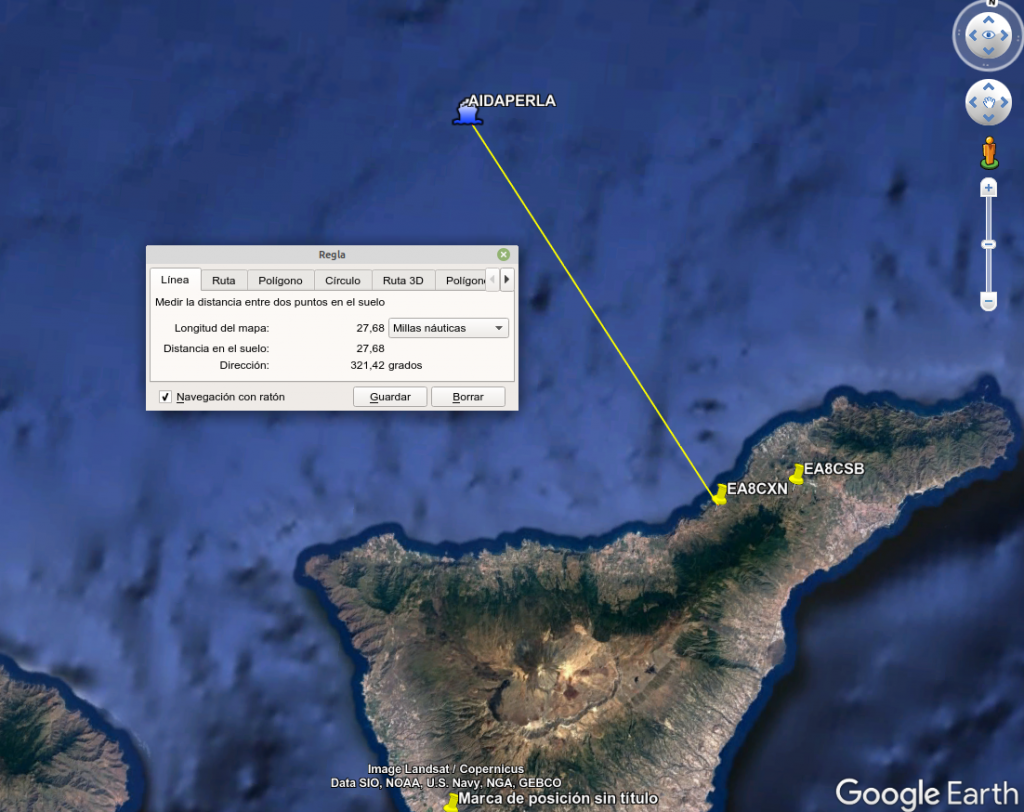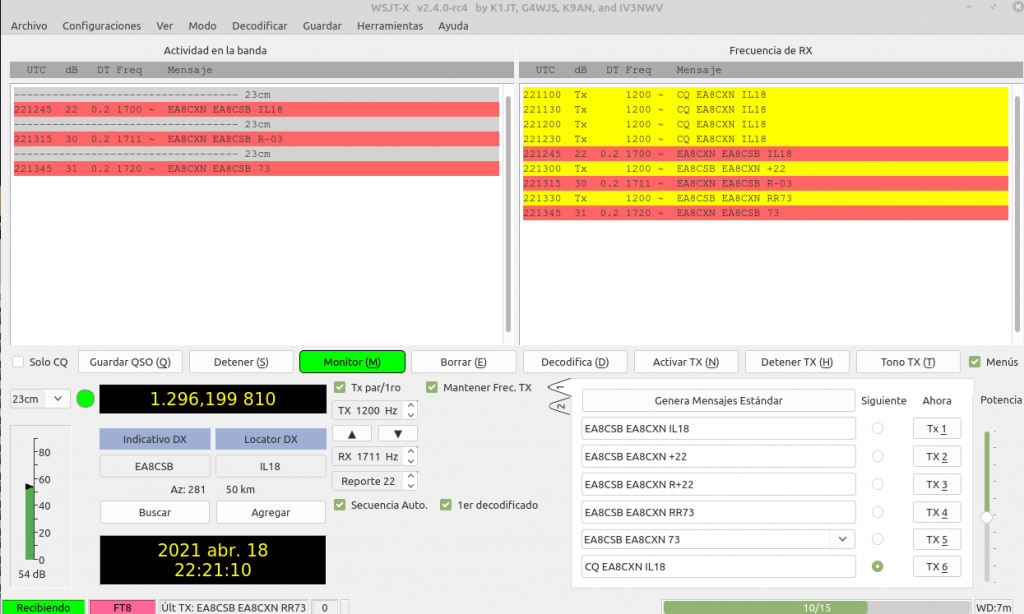All VHF / UHF operators know the “Air scatter” or bouncing the signal in airplanes, with the aim of achieving greater distances, or avoiding some artificial or natural obstacle between two stations. This practice is well documented and there is software support that, calculating the ideal conditions to make contact, using topographic maps and integrating the data offered by the different ADS-B platforms.
The operation is simple, take advantage of the moment that the plane gets between the two stations to bounce the signal on it, and get the QSO.
In Tenerife we have tried to carry out «air scatter» between various stations with good but brief results, because most of the air traffic that flies through our area is usually found in landing or take-off maneuvers.
For this reason we have extrapolated the idea of air scatter to something more tangible for our peculiar orography, and to be able to avoid the mountains that prevent us from communicating in VHF and above. Our islands have a large maritime traffic, especially large cruise ships, which carry out circuits between the islands on a regular basis. These ships are made of metal, with several decks, equivalent in some cases to buildings.
On April 18, we were EA8CSB and EA8CXN in their selected QTHs, with a mountain range that prevents us from directly making a 1.2 Ghz QSO. After visiting one of the web pages where the position of the ships equipped with AIS is reflected, we realize that the cruise ship Aidaperla is sailing towards the island of La Palma, and its position is visible for both stations.

I get the position to calculate the bearing from my QTH


First, we try on FT8, to check the bouncing conditions and to get a precise beaming direction.


After the FT8 QSO, we try on SSB with success
The stations are :
- EA8CXN:
- Yaesu FT-991 + SG Lab Transverter
- Telecom PA 150W
- 1m dish, Horizontal pol.
- LNA
- TX Power during the QSO = 100W
- EA8CSB
- ICOM IC-705 + SG Lab Transverter
- Diamond X-7000 , Vertical pol.
- TX Power during the QSO = 2.5W
This experience has been very positive, and it will help us to continue trying more difficult QSOs, especially at 23 or 13 cm where the signal attenuation due to ground bouncing is significant. It will also serve as a basis to try to implement a layer of maritime traffic in some software that will serve as a resource to calculate azimuth and visibility through both stations of the selected ship, very similar to the Air Scout software.
It should be noted that the Doppler effect is negligible, since the relative navigation speed of the ships is very low.
73, EA8CXN

Well done. Congratulations!
That´s a great job, Cesar! I love such stuff. A couple of years ago I have been to Puerto de la Cruz and so I know about the topografic situation.
Everything out of metal is good for reflexions, even the ISS, satellites and rocket bodies 😉
Aircraft scatter on 13 cm isn´t much worse than on 23 cm, I did a lot of QSOs up to 800 km on that band.
Would be of interest, to try on 3 cm.
vy 73 de DJ5AR / EI8HH
Thanks for the info Andreas, it is a good idea to try on 3cm!
73 de EA8CXN
IC-7300 with full scale ALC and over 20 dB compression. That’s great!
Great idea, well done both stations
Very interesting that the signal would drop 204m in height (both ways) to reflect from the ship over 51 km(https://earthcurvature.com/) to be reflected back to the other station.
Just raises the question again about globe earth and flat earth. We know that light and RF waves travel in straight lines except when bent in ionosphere, but not 1296 as far as my knowledge goes. Not on this short distance e anyway, maybe for EME,
But still a good contact guys!!!
Just a thought??????